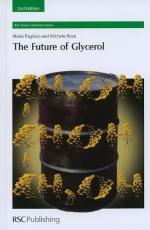|
This section contains 797 words (approx. 3 pages at 300 words per page) |

|
Overview
Glycerol (GLIH-ser-ol) is a clear, colorless, odorless, sweet-tasting syrupy liquid. It is a trihydric alcohol, meaning that its molecules contain three hydroxyl (−OH) groups. Glycerol occurs naturally in all animal and plant cells. Glycerol was discovered in 1779 by the German chemist Karl Wilhelm Scheele (1742–1786) and named by the French chemist Michel Eugéne Chevreul (1786–1889) because of its sweet taste (glycos means "sweet" in Greek). In 1836 the French chemist Théophile-Jules Pelouze (1807–1867) determined the molecular formula for glycerol, and three decades later, in 1872, the compound was first synthesized (created in a laboratory) by the French chemist Charles Friedel (1832–1899). About 250 million kilograms (500 million pounds) of glycerol are produced in the United States each year, the majority of which goes to the production of food and personal care products.
Key Facts
Other Names:
Glycerin; glycerine; glycyl alcohol
Formula:
CH2OHCHOHCH2OH
Elements:
Carbon, hydrogen, oxygen
Compound Type:
Trihydric alcohol (organic...
|
This section contains 797 words (approx. 3 pages at 300 words per page) |

|


